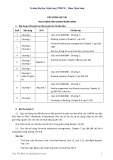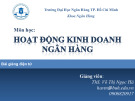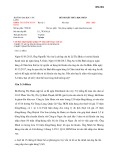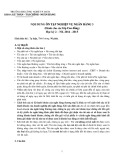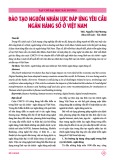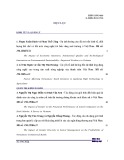
http://www.iaeme.com/IJM/index.asp 16 editor@iaeme.com
International Journal of Management (IJM)
Volume 9, Issue 1, Jan–Feb 2018, pp. 16–21, Article ID: IJM_09_01_004
Available online at
http://www.iaeme.com/ijm/issues.asp?JType=IJM&VType=9&IType=1
Journal Impact Factor (2016): 8.1920 (Calculated by GISI) www.jifactor.com
ISSN Print: 0976-6502 and ISSN Online: 0976-6510
© IAEME Publication
IMPACT OF TALENT MANAGEMENT
PRACTICES ON EMPLOYEES’ PERFORMANCE
IN PRIVATE SECTOR BANK
Hitu
Research Scholar, Institute of Management Studies and Research
Maharshi Dayanand University Rohtak.
Satyawan Baroda
Professor, Institute of Management Studies and Research,
Maharshi Dayanand University Rohtak.
ABSTRACT
The present study attempts to examine the impact of talent management practices
on employees’ performance in selected private sector banks. Primary data has been
collected through pre-tested structured questionnaire. For the purpose of data
collection, a sample of 102 employees working in the private sector banks of Haryana
is taken on the basis of judgement sampling. The collected data is analyzed with the
help of factor analysis. The finding indicates that talent management practices have
direct impact on employee motivation, employee creativity, and employee satisfaction
and employee competency. The study recommends that there should be healthy and
stress free working environment, career progression opportunity, regular training,
welcome employees’ innovative idea and transparent proper promotion policy for the
management of talent in the organization.
Key words: Talent, Employee, Performance, Banks, Factor
Cite this Article: Hitu and Satyawan Baroda, Impact of Talent Management Practices
on Employees’ Performance in Private Sector Bank. International Journal of
Management, 9 (1), 2018, pp. 16–21.
http://www.iaeme.com/IJM/issues.asp?JType=IJM&VType=9&IType=1
1. INTRODUCTION
Talent management is new and important concepts in the Human Resource Management.
Talent management is recognizing employees’ personal skills, abilities and offering him a
suitable job. It is primary responsibility of Human Resource Management is to employ right
talent at right place. It increases the productivity of the organization. Thus talent management
is an important for both the organization and employees. It increases productivity of the
organization and develop the personal skill of employees.







